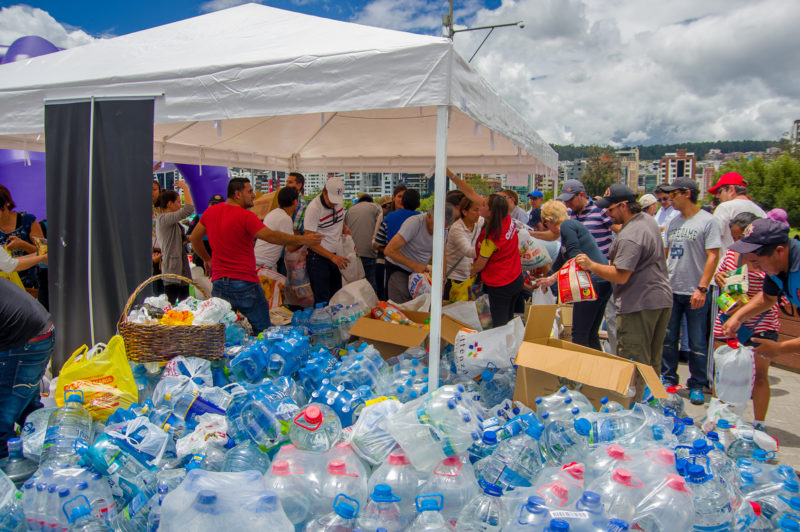In times of trouble, it’s important to know what resources are available to you. When “trouble” comes in the form of a natural disaster, that’s a much harder challenge; even experts may be displaced and depending on how serious the damage to an area is, there may be few people around who can answer questions. Here are some basic resources to use when a natural disaster strikes.
Fire-specific Resources
Unfortunately, the people of California are not strangers to the hazards presented by wildfires—especially this year. Fortunately, there are resources available to help you plan, prepare, and stay ahead of the blaze. Ready.gov explains what to do before, during, and after a wildfire, and exactly what you should do if you get a fire watch alert from the National Weather Service. The California Wildfire Resources Services page of the Governor’s Office of Emergency Services provides important emergency numbers county by county. And WildfireRecovery.org provides the most up to date wildfire recovery resources, statewide.
Federal Emergency Management Agency (FEMA)
FEMA‘s mission is to support citizens and first responders when natural disasters and other emergencies happen. If you need to apply for help from FEMA, go to this link. At the time you apply you will need your social security number, the address where the damage happened, your address and telephone now, your insurance and income information, your banking numbers so FEMA can send you money, and a description of what happened. You can apply for help getting shelter, repairing your home, and covering other needs, but you can’t duplicate help you’re getting from insurance.
Short-term Housing
Seek short-term housing in your area online. In the case of the Northern California fires, offices like the Office of Short-term Rentals in San Francisco are making an effort to help people coordinate these kinds of arrangements. Airbnb is also offering free accommodations to fire refugees.
Furniture Rental
In recent days we have gotten a slew of inquiries about furniture rental from people setting up temporary residences because of the fires. Remember, even if the worst happens, you don’t have to spend thousands of dollars buying all new furniture along with everything else you’re already coping with. Furniture rental is an ideal option when a natural disaster hits, and you can have the new set up ordered, delivered, set up, and ready to go in 24 hours—one big item checked off an exhausting list.
The Centers for Disease Control and Prevention (CDC)
The CDC provides a guide and resource list for natural disasters and extreme weather. It includes information on preparing for disasters, getting safe food and water after disasters from a variety of sources, sanitation and hygiene, and water-related diseases and illnesses.
Financial Planning
Financial planning may be the furthest thing from your mind after a disaster hits, but although you should avoid making major financial decisions when you’re still in shock, soon after the disaster unfolds is an important time to make sure you’re on top of important matters. You’ll need to assess your situation to evaluate how much cash or assistance you might need, file claims quickly, apply for available relief, keep track of financial losses as best you can, replace important documents, and apply for disability benefits if you can’t work.
TimeBanks
Look for TimeBanks in your community (here is a California directory). During normal times, time banking, also called community currency, allows members of the community to donate time to each other to maximize resources and skills. In times of natural disasters, TimeBankers rise to the occasion, donating their time and resources to help those in need. If you’re willing to donate your own time and skills back later, this is a great solution when you need help. Here’s how it works:
During normal times, TimeBanking networks of people join together to volunteer their time to help each other. This builds a strong social network for their community. In exchange for their time, they get “currency” or credits for hours in a time bank that they can trade or exchange at local farmers markets, mom-and-pop stores, or can use to barter services. For example, say I volunteer to help you move and paint your new home. I get credit for 20 hours of time in our local timebank that we both belong to. I can exchange some of those credits at the corner store in our neighborhood, or I can trade them for a haircut at the local beauty salon, or with anyone else who belongs.
Any of these timebanking activities increase social cohesiveness and the kind of resilience that you see mentioned in the news when experts talk about why communities bounce back from disasters. Research shows that community currency gets people involved in their community, and builds trust. And during times of crisis, people who are more closely bonded are more likely to help each other—and to know that the favor will later be returned.
Other Resources
There are lots of other resources available during natural disasters. Disaster-relief.org lists many resources and describes what they do, and Benefits.gov lists types of government assistance like business physical disaster loans and how to apply for each kind.
Good Luck Out There
Here’s to all of our friends and neighbors staying safe and well out there, and getting through these days. We hope these basic resources to use when a natural disaster strikes were useful to you—but we hope even more that you never need them.






